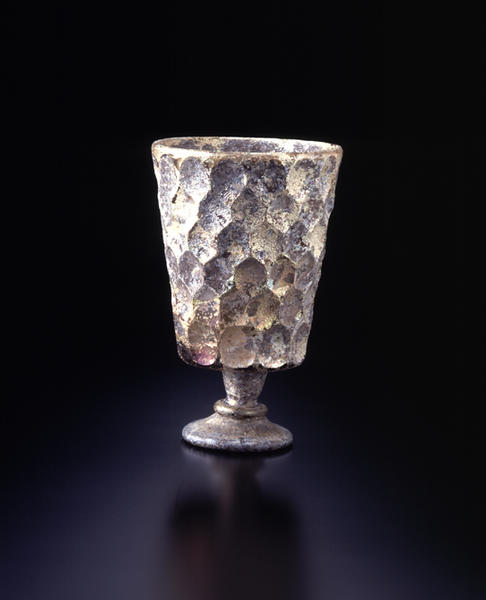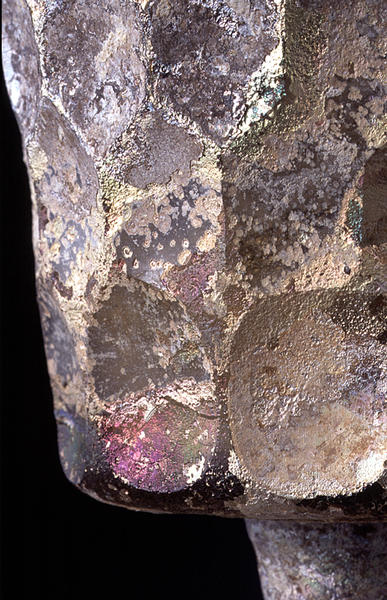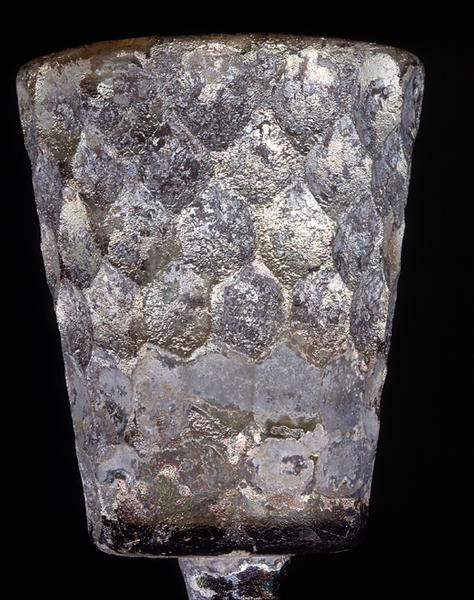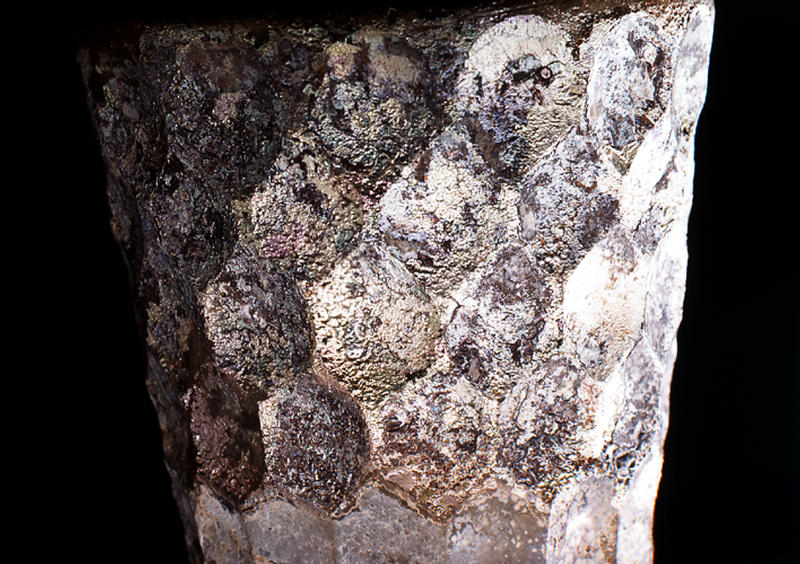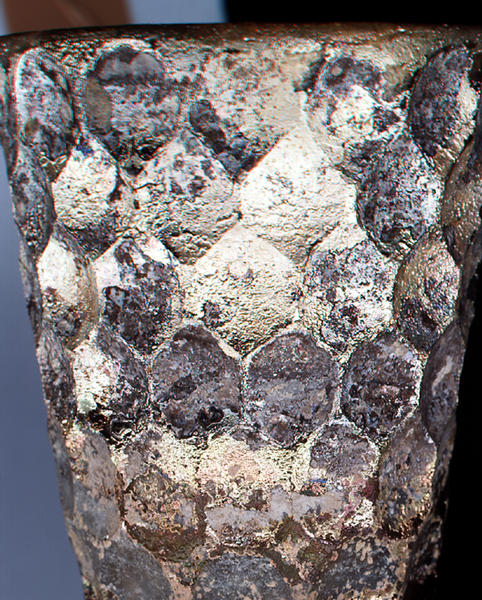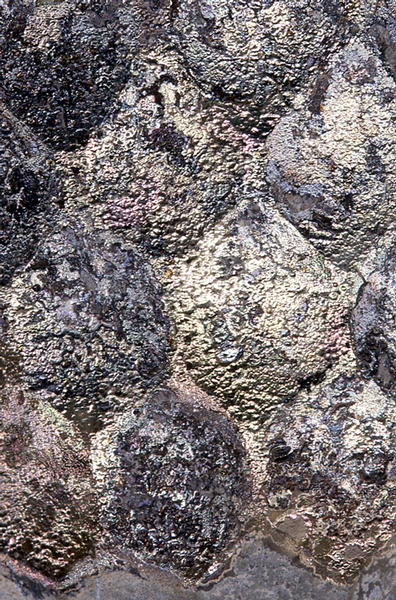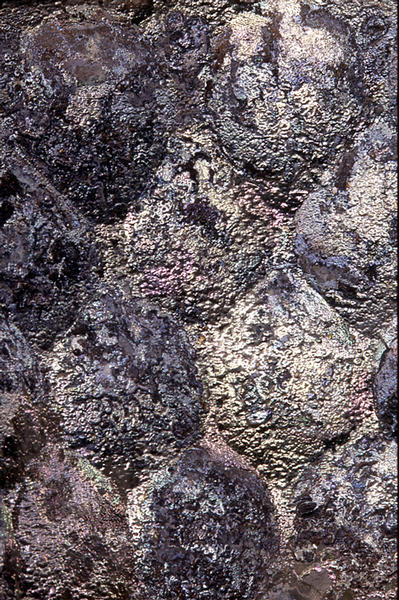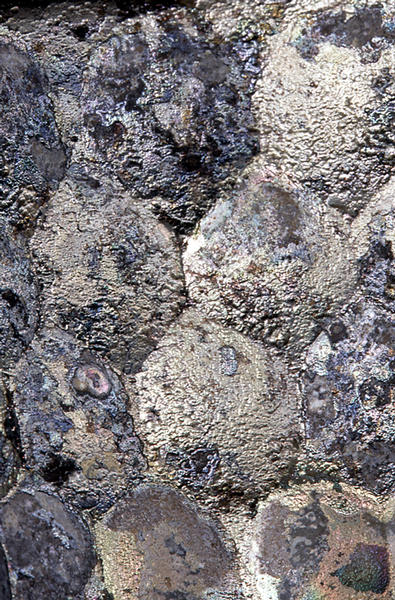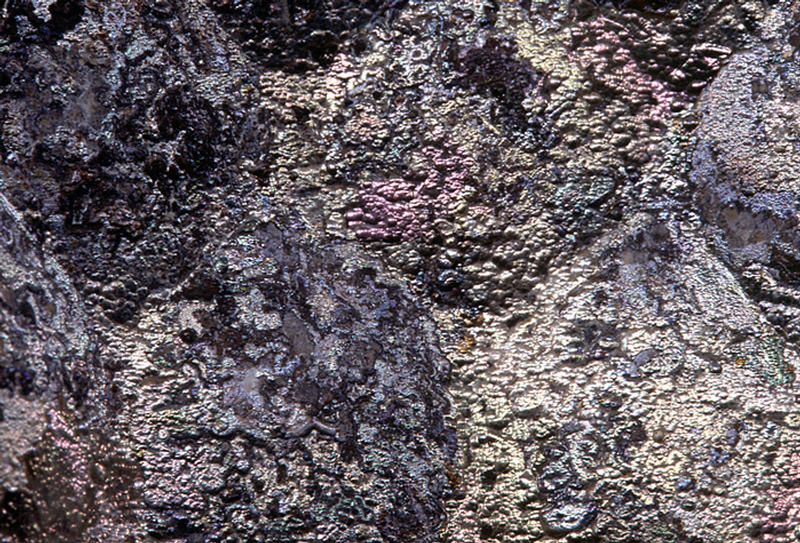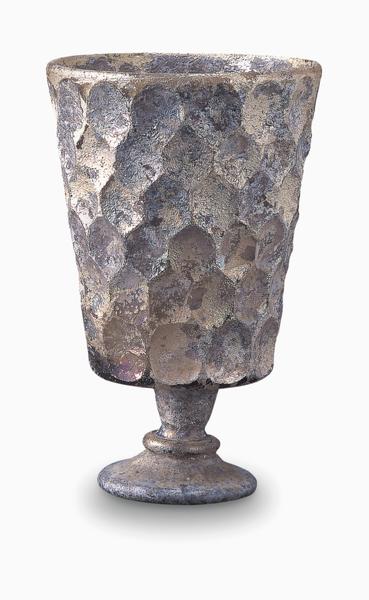切子装飾脚杯
- 伝イラン
- ササン朝ペルシア/イスラム初期
- 6-7世紀
- ガラス製
- H-16.7 D-10
ほぼ無色透明のガラスを型吹きし、脚を付けてカット装飾を施した杯である。ガラスは厚い部分で4ミリほどある。カットは6段で、上から5段は15個のカットで器を一周し、6段目は11個で一周している。脚はゴブレット形で、足首には紐装飾をめぐらす。接地部分の中央にポンテ跡がある。ササン朝ペルシアの切子技法を踏襲したゴブレットは珍しく、全面を見事な黄金色の銀化が覆っている、力強い作品である。
Catalogue Entry
This cut-glass stemmed beaker is decorated in a fashion common in the Eastern Roman Empire in the second and third centuries A.D. and in the Near East through the early Islamic period. A variety of Near Eastern glasses, having walls covered with contiguous cut facets, are found over a wide area from Scandinavia to Japan.1 The appearance of this type of faceted vessel, when unweathered, is impressive. As each facet mirrors the facet on the opposite wall, the form of the vessel dissolves into an intricate pattern of reflected light.
During the Sasanian period (A.D. 224-651) the use of faceted designs to decorate glass appears to have been particularly popular, and many vessels of this type have survived. However, the most common Sasanian shape is not a footed goblet or beaker but a hemispherical or open bowl.2 Examples of goblet feet are known from Sasanian levels at Kish and at Medain near Tello in Mesopotamia, but the glass beaker with a foot is more characteristic of the Islamic era.3 Fragments of feet and, more rarely, of a goblet cup having a flat base similar to this example, are known from Ctesiphon and Seleucia in Mesopotamia, and Susa in Iran, where they are dated to the early Islamic era (eighth-ninth century A.D.).4 The color of the Susa glasses ranges between opaque gray and brown.
Silver drinking cups resting on a pedestal foot were made throughout the Roman world from the first to the fifth century A.D.,5 and the high-footed chalice is a common form in early Christian church treasures of the sixth and seventh centuries in Syria.6 Representations of drinking cups resting on a pedestal foot also appear to the east, in the wall paintings of the sixth to seventh century at Balylyk Tepe in Uzbekistan.7 However, this form of silver drinking vessel is unknown in Sasanian Mesopotamia and Iran.
In all probability this handsome glass beaker is a work of the early Islamic period, although a late Sasanian date cannot be ruled out.
POH
l. Ekholm 1963, pp. 29ff.
2. Harper et al. 1978, p. 159, no. 82.
3. Langdon and Harden 1934, pp. 131-36, fig. 5, no. 16; Genouillac 1936, pl. 134.
4. Ctesiphon: unpublished, New York, Metropolitan Museum of Art 32.150.237; Seleucia: Negro Ponzi 1970-71, pp. 67-104, fig. 54, nos. 111-14; Susa: Kervran 1984, p.214, fig. 10.1-.3, fig. 11.
5. Strong 1966, p. 137, 187-88, pl. 54b.
6. Mango 1986.
7. Al'baum 1960, fig. 105.
解説(春の玉手箱)
このように連続する切子面の作品は、スカンジナヴィアから日本に至る広い範囲で発見されている。この形式の切子杯の外見は、風化を受けていない場合には強い印象を与える。切子の各面が反対側の面の切子を映し出すことによって、器の形は反射する光の複雑な模様のなかに溶け込むのである。切子をガラスの装飾に用いる手法はササン朝時代に特に流行したとみられ,この形式の作例が多数現存するが、ササン朝で最も一般的だったのは脚杯ではなく,半球型ないし口縁の大きな碗であった。この杯は土中の経年変化により銀化を生じており、そのため光の具合で、切子面の立体感が鮮明に浮かび上がり、脚付の端正な姿と相俟って格調高く感じられる。
Catalogue Entry
Blown and molded from almost colorless translucent glass, this cut-work decorated cup has a separately attached foot. The glass is 4 mm thick at its thickest parts. The cuts are in six ranks, with the upper five ranks of cuts made up of 15 cuts which circle the body, and the sixth rank made up of 11 cuts which circle the form. The foot is goblet-shaped and a cord of decorative glass circles the top of the foot. There is a pontil mark in the middle of the base. Such goblets made in Sasanian cut-glass technique are rare, and this powerful work is covered overall with an impressive gold-colored layer of iridescence.
